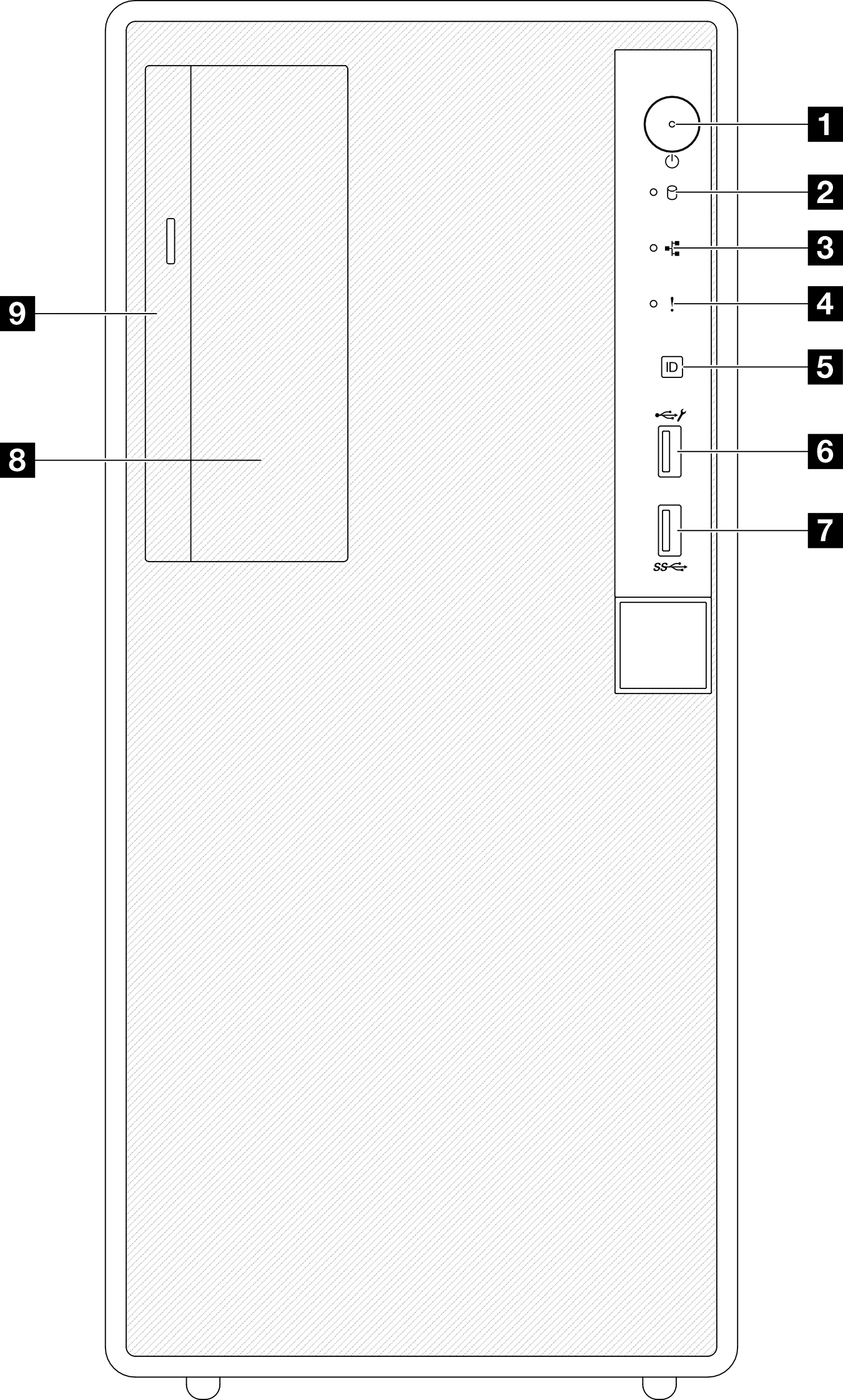Front view
This section contains information about the controls, LEDs, and connectors on the front of the server.
Front view of the sever components

| 1 Power button/LED (green) | 6 USB 2.0 connector with Lenovo XClarity Controller management |
| 2 Drive activity LED (green) Note For onboard SATA indication only | 7 USB 3.2 Gen 1 (5Gbps) connector |
| 3 Network activity LED (green) | 8 3.5-inch drive bay |
| 4 System error LED (yellow) | 9 Optical-drive bay |
| 5 System ID button LED (blue) |
2 Drive activity LED (green)
| Status | Color | Description |
| Blinking | Green | The drives are active. |
| Off | None | The drives are not active. |
3 Network Activity LED (green)
| Status | Color | Description |
|---|---|---|
| Blinking | Green | The network is connected and active. |
| Off | None | The server is disconnected from the network. |
4 System error LED (yellow)
| Status | Color | Description | Action |
|---|---|---|---|
| On | Yellow | An error has been detected on the server. Causes might include one or more of the following errors:
| Check system logs or internal error LEDs to identify the failed part. |
| Off | None | The server is off or the server is on and is working correctly. | None. |
5 System ID button/LED (blue)
Use this system ID button and the blue system ID LED to visually locate the server. Each time you press the system ID button, the state of the system ID LED changes. The LED can be changed to on, blinking, or off. You can also use the Lenovo XClarity Controller or a remote management program to change the state of the system ID LED to assist in visually locating the server among other servers.
6 USB 2.0 connector with Lenovo XClarity Controller management
Connection to Lenovo XClarity Controller is primarily intended for users with a mobile device running the Lenovo XClarity Controller mobile application. When a mobile device is connected to this USB port, an Ethernet over USB connection is established between the mobile application running on the device and the Lenovo XClarity Controller.
Select Network in BMC Configuration to view or modify settings.
Four types of settings are available:
Host only mode
In this mode, the USB port is always solely connected to the server.
BMC only mode
In this mode, the USB port is always solely connected to Lenovo XClarity Controller.
Shared mode: owned by BMC
In this mode, connection to the USB port is shared by the server and Lenovo XClarity Controller, while the port is switched to Lenovo XClarity Controller.
Shared mode: owned by host
In this mode, connection to the USB port is shared by the server and Lenovo XClarity Controller, while the port is switched to the server.
7 USB 3.2 Gen 1 (5 Gbps) connector
The USB 3.2 Gen 1 (5 Gbps) connector can be used to attach a USB-compatible device, such as a USB keyboard, USB mouse, or USB storage device.
8 3.5-inch drive bay
Depending on the model, the server might come with a 3.5-inch drive installed in this drive bay. See Install a simple-swap drive (bay 2) for more details.
9 Optical drive bay
Depending on the model, the server might come with an optical drive installed in the optical drive bay. See Optical drive and drive cage replacement for more details.